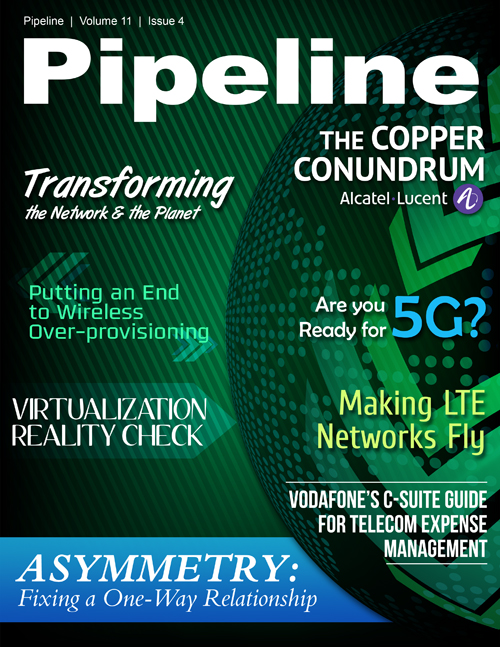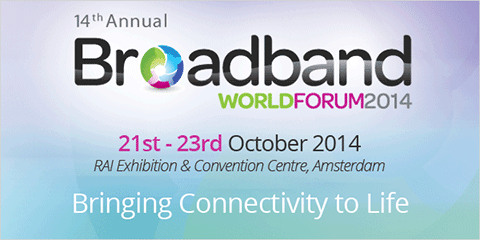Fixing a One-Way Relationship with Fiber: The Asymmetry Problem
By: Jesse Cryderman

Copper and coax have a data relationship problemâdata doesnât move at the same speeds in both directions. This inherent asymmetry is why service providers pitch their download speeds, and not their upload speeds. In extreme cases, such as AT&T Uverse, the difference between download and upload speeds can be 20X. Thatâs a pretty unbalanced relationship by anyoneâs standards. It also is increasingly out of touch with todayâs use cases in both the consumer and enterprise markets. Cloud computing has dramatically increased upstream traffic, along with HD video sharing and peer casting. Fiber offers symmetrical download and upload, which matches use patterns, and doesnât require any funny business from marketing.
Can copper go both ways?
Itâs important to note that there have been advancements in copper over the past year. In June, Bell Labs, the research arm of Alcatel-Lucent set a new broadband speed record of 10 gigabits-per-second (Gbps) using traditional copper telephone lines and a prototype technology that demonstrates how existing copper access networks can be used to deliver 1Gbps symmetrical ultra-broadband access services.
Achieving 1 Gbps 'symmetrical' services â where bandwidth can be split to provide simultaneous upload and download speeds of 1 Gbps â is a major breakthrough for copper broadband. It could enable operators to provide Internet connection speeds that are indistinguishable from fiber-to-the-home services, a major business benefit in locations where it is not physically, economically or aesthetically viable to lay new fiber cables all the way into residences. Instead, fiber can be brought to the curbside, wall or basement of a building and the existing copper network used for the final few meters.
The Bell Labs' tests used a prototype technology called XG-FAST. This is an extension of G.fast technology, a new broadband standard currently being finalized by the ITU. When it becomes commercially available in 2015, G.fast will use a frequency range for data transmission of 106 MHz, giving broadband speeds up to 500 Mbps over a distance of 100 meters. In contrast, XG-FAST uses an increased frequency range up to 500 MHz to achieve higher speeds but over shorter distances. Bell Labs achieved 1 Gbps symmetrical over 70 meters on a single copper pair. Its impressive 10 Gbps was achieved over a distance of 30 meters by using two pairs of lines (a technique known as âbondingâ). Both tests used standard copper cable provided by a European operator.Marcus Weldon, President of Bell Labs, talked about the groupâs vision in a recent press release. âOur constant aim is to push the limits of what is possible to âinvent the futureâ, with breakthroughs that are 10 times better than are possible today.â Weldon said that by pushing broadband technology to its limits, âoperators can determine how they could deliver gigabit services over their existing networks, ensuring the availability of ultra-broadband access as widely and as economically as possible.â
Federico GuillĂ©n, President of Alcatel-Lucentâs Fixed Networks business, said that gigabit, symmetrical copper can actually help operators deploy FTTH. In others words, itâs not an either/or, but a both/and situation. âThe Bell Labs speed record is an amazing achievement, but crucially in addition they have identified a new benchmark for âreal-worldâ applications for ultra-broadband fixed access. XG-FAST can help operators accelerate FTTH deployments, taking fiber very close to customers without the major expense and delays associated with entering every home. By making 1 gigabit symmetrical services over copper a real possibility, Bell Labs is offering the telecommunications industry a new way to ensure no customer is left behind when it comes to ultra-broadband access.â





















